.
The Tale of Spitfire BL497 310 Squadron (Czech)
of 10 Group Fighter Command – Perranporth.

Starboard wing spar recovered.
Dedicated to those pilots who flew from RAF Perranporth and died whilst on active service and whom nothing was ever written.
The Discovery:
Whilst out walking the Beach on 25 February 1998, a nice afternoon for Winter and after a scouring tide which had lowered the beach sand by roughly ¾ft. At low water we rounded the point at the bottom of Droskyn and my wife pointed to a tyre sticking out of the sand. We ambled over to investigate and instantly recognised it as an aircraft tyre. Cleaning the sand around we found it was attached to an Oleo leg. Thinking at the time we had found a small part of wreckage we attempted to pull out the leg and wheel but soon realised this was an impossible feat for us. As the tide was on its way back in it was a question oF beating a hasty retreat. At this point in time we were mildly excited that we had found something of quite some interest.

Starboard tyre.
The following day with a small group oF helpers we returned in the hope of uncovering what lay beneath the sand. Good luck was with us as the wheel was still showing above the sand. Knowing the tide factor, we realised we had but about 2 hours to play about with before the tide returned. Unfortunately this time the wheel was sticking up from a fairly large pool of water which was quite deep. However, a line was attached to the Oleo leg and with a lot of effort, heaving etc., a large section of wing spar with fuselage centre former and firewall attached broke away and was dragged out, examined and photographed. We were fairly certain we had Spitfire wreckage and some of the parts were in remarkable condition after immersion in salt water for 46 years. An Inspection Stamp was found on some of the parts bearing the legend V.A.C.B. which translates to Vickers Armstrong Castle Bromwich – one oF the largest manufacturers of Spitfires. With time running out we could only search the area with a metal detector which gave us a reasonable picture oF a lot of metal. In the sand it was noticed that there were heavy readings from the Detector which indicated that a lot oF metal was laying beneath the sand including large quantities of a bluish-grey colour, known as Daz, which was magnesium alloy dissolved by salt water.

Close-up of wing spar.
We collected up what small parts could be carried that were lying around and re-buried the Wing Span back in the pool of water as required by the 1986 Protection of Military Remains Act. On subsequent visits to the crash site there has been no more sightings and the sand is roughly 4 to 5 ft higher now than at the time oF the original discovery.
In the accompanying photographs it can be seen that the span is the starboard spar attached to what is left oF fuselage former No. 5 and shows Oleo leg in up position and the remnants oF the radiator with coolant pipes. Also the hydraulic jacks for the undercarriage can be seen.

Close-up of wing spar.

No: 5 former and Firewall top.
The Search for Identity:
Arriving home and looking at the parts we had salvaged – which incidentally are now on display in Perranporth Museum’ – curiosity was aroused and the first steps were made to arrive at the identification of the aircraft. The known facts were that it was a Spitfire with a Merlin engine (the tyre size confirmed the Merlin engine) and the wheels were in the up position confirming that it would be a crash or a ditching. Going by crash site area our First move was the M.O.D. Air Section who informed us that crashed aircraft were not listed by site but by Serial number only. This leFt us looking For a Serial number amongst the parts.

Coolant pipes with section of D Box leading edge skin.
Logically the firewall was the place to examine but this was in a badly corroded condition and no number was found.
From the parts we had and with the aid of a Spitfire Workshop Manual, we put the aircraft as most likely a Mk V LF. By this time our library had increased many-fold with Workshop Manuals, The History of the Spitfire, and several other reference books.
From other’s experience in tracing aircraft and procedure using the Records Office at Kew, we began the search. ‘Spitfire the History’ proved invaluable and we decreased our search from 22,000 odd Spitfires to roughly 6,500 aircraft working on the theory that the aircraft was a Mk V which were in use at Perranponth at this time. Information came from various sources and we understood that 18 SpitFires crashed round about the area oF Perranporth.
A lucky break came when two witnesses came forward who actually saw the crash at Droskyn which enabled us to put an approximate date of the accident. Searching through ‘Spitfire the History’ we eventually found two aircraft that crashed around our suspected date and area – namely AD420 and BL497.

Brake drum and shoes.
Fortunately we have a friend living close by the London Area and who is also ex-Service, retired like ourselves, and just happening to be an aircraft bufF with a very good understanding of computers and procedure. He spent many hours at the Record Offices at Kew and his help was invaluable in obtaining the relevent files appertaining to the two aircraft. Photostats were made of the material and the story unfolded showing the identity of the aircraft, who flew it, what Squadron and how it came to crash.
We have deliberately kept this chapter as short as possible but we would point out that it covers research work oven a period of four years and at times it looked hopeless, running into blind alleys and full stops. We thought we would never ever discover the truth of it all. But, with patience and an awful lot oF help from various people, including Bob Andrew of the Cornish Aviation Society, who inspired us and helped us with information he had collected oven the years, and our – friend Mike Sole who unearthed all the Official documents at Kew, the story was able to be told and identity of the Penranponth Spitfire disclosed.
The Aircraft:
Spitfire BL497 MkV LF manufactured by Vickers Armstrong, Castle Bromwich, and delivered on 26.12.41 to 38 MU. It passed to 310 Squadron on 8.2.42 sustained Category E damage by flying accident and struck off charge the day of the crash 12.4.43. Flying time total – 61 hours 40 minutes.
The Pilot:

F/L. Stanislav Zimprich.
Flight Lt. Stanislav Zimprich joined 310 Squadron at Duxford on July 10, 1940. He fought in the Battle of Britain and destroyed a Do 17. He died on April 12, 1942 at the age of 26. At this point in time other Service History and achievements are not known. He is buried in the churchyard at St. Augustines, Heanton Punchardon, Devon. (Nr. Chivenor).
The Crash:
On a bright sunny Sunday morning on 12 April, 1942, B. Flight oF 310 Squadron, consisting oF six aircraFt, took off from the Airfield led by F/Lt. Burda with F/Lt. Zimprich, Sgt’s. Halama, Vindiš, Dygrýn and Šrom.
The object of the flight was to carry out mock attacks using cine cameras. During the practice attack at 11:08 hours, F/Lt. Zimprich appeared to make a mock attack on Sgt. Halama’s aircraft, coming from above rear and to the port side, clipping the tail of Sgt. Halama’s aircraft on passing, which promptly went into more on less a vertical spin, crashing into Gear Sands. Sgt. Halama was killed outright. F/Lt. Zimprich was seen to fly very low from the sandhills towards the beach, his undercarriage up and flaps down and with the engine cut. An attempt was made to land on the beach, the tide being out. He struck the beach and carried on out into the sea, ending up approx. 50 to 200 yards out. For quite some minutes the tail of the aircraft was visible sticking up out of the water and a dark object was seen to float clear of the wreakage. F/Lt. Zimprich was seen floating away from the aircraft. This is confirmed by the Coastguard lookout who gave the distance as no more than 50 yards. Several Air Force men and Soldiers formed a chain to reach the Pilot but were beaten back by the sea. It was clearly seen that the Pilot had his Mae West on, thus supporting him in the water.

Sgt Stanislav Halama.
The remaining aircraft of the Flight returned and landed. Sgt. Šrom on landing found the South East crosswind too strong and his aircraft was tipped over on to one wing causing some damage to the aircraft but not himself. At 11:35 F/Lt. Burda took off again to search for F/Lt. Zimprich but finding no trace landed again at 11:45. He also had a landing accident, again due to the very strong winds, the aircraft tilting up on its nose, the Pilot suffering no injury.
The Newquay Lifeboat was launched and searched the area for four hours. The Lifeboat returned to Station at 16:03 and, the search was called off.
Later in the afternoon F/Lt. Zimprich’s aircraft was washed in by the tide at the base of Droskyn. The aircraft appeared undamaged except the engine had been torn out. The cockpit was empty and the seat belts were undamaged. By this it means that F/Lt. Zimprich was either flung out out or got out of the cockpit when the aircraft hit the sea. Attempts were made to salvage the aircraft but with no success and the aircraft remained there until discovered by ourselves 46 years later.
The last piece of the puzzle was unravelled very recently. It was never understood how F/Lt. Zimprich came to be buried in Devon. Sadly it would appear that after exiting the cockpit of his aircraft he floated away and, whilst every effort was made to rescue him, the search was fruitless. His body came ashore 3 months later on July 20 at Coombe Martin, Devon. The last of the of the puzzle clicked into place.

Sgt. Halama’s grave is to be found in the RAF section at Illogan cemetery near Pontreath.

All relevant documents support in all ways the story and end of Spitfire BL497.
Our thanks to Bob Andrew of the Cornish Aviation Society and our good friend Mike Sole, also to Nick Eade and family for their help in the salvage and recovery of the various items. Without their help, guidance and inspiration the story could never have been told.
Peter & Sheila Spratt
Spring 1995.
.
.

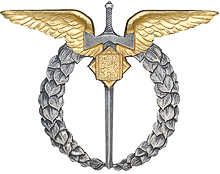




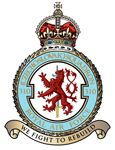
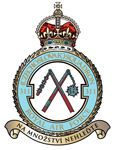
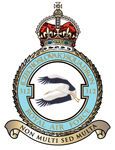
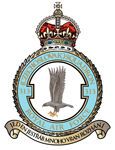


Thanks for this story, my “Granduncle” was Sgr. Stanislav Halama, i was excited when i finally found something about him. Thanks again, G. Halama.
My Grandad, Vaclav Bergman, was co of. 310 and told us about this crssh. Thankyou for sharing this story